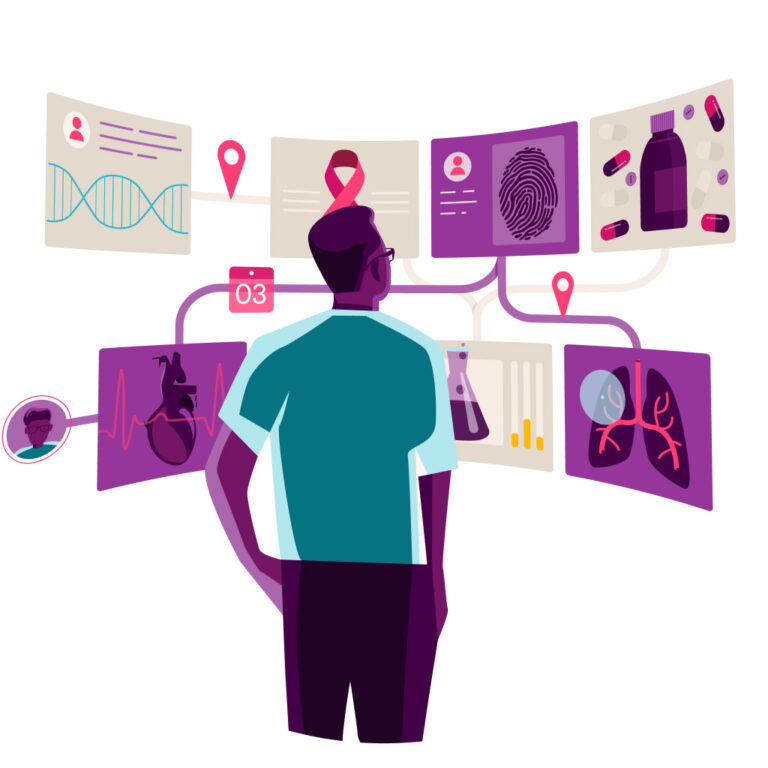Magentus advisory board member David Wells explains how accurate and timely diagnosis sitting at the heart of patient care perfectly positions pathologists to lead a data-driven revolution.
Health challenges and social inequalities have been sharply magnified during the global pandemic. The World Health Organization has called for global action to tackle the problem, but the pressures on healthcare systems continue to grow right around the world. With the need for transformative change more urgent than ever, we must refocus on how best to navigate the new realities of patient management.
Accurate and timely diagnosis sits at the heart of patient care. Pathologists are perfectly positioned to lead a data-driven revolution that will bring health systems firmly into the 21st century, transforming patient outcomes globally via world-class interoperable diagnostics and data workflows. Using data-rich laboratory information management systems (LIMS), pathologists can reshape healthcare with patients firmly at the centre of models of care.
Networked LIMS are at the forefront of large-scale improvements to workflow and patient care across disparate disciplines and vast geographies. Innovative diagnosticians are collaborating with clinicians beyond traditional organisational silos throughout labs, hospitals, and trusts to deliver a higher quality of care that is increasingly integrated and multidisciplinary.
Our most advanced pathology and radiology networks are also successfully incorporating the fast-growing plethora of clinical AI apps, giving trusts access to more predictive analytics and putting more personalised care within reach.
National solutions
NHS England recently announced new requirements to share results across previously rigid healthcare settings and organisational boundaries. NHS Scotland scoured the globe before selecting a LIMS that will ensure future-proofed interoperability across their countrywide pathology network, inspired by the system’s success in aggregating diagnostic services and delivering equitable patient access over vast geographies in Australia. NHS Scotland has established national LIMS framework and turned to the same provider to network its Boards and pave the way for true cross-system integration.
Yet to truly move diagnostics forward, we need to show clinicians the longer-term effectiveness of their recommendations on patient outcomes. We must accelerate the adoption of scalable data and interoperability standards, continually evolving virtual lab management to orchestrate data across patient journey settings.
So how do we drive the necessary pace of change? The COVID-19 pandemic showed that where there is a will, there is a way. Specifically, it proved that high-quality healthcare system change can be rapidly delivered. The UK has exponentially grown its molecular diagnostic capability – from processing 300,000 molecular microbiology tests per year in England to performing more than that number in just one day for SARS-CoV-2.
Past informing future
When it came time to roll out the COVID-19 antibody test countrywide, we did so in just two weeks. Harnessing this can-do attitude and maintaining this appetite for collaboration across organisations, disciplines and trusts could swiftly transform diagnostic networks on a national scale. There is already enough diagnostic patient data across radiology and pathology systems to provide life-saving patient insight. Unlocking the potential of this data and better integrating the information at our fingertips could prioritise patients appropriately, connecting them with the best clinicians for their needs. Beyond this, plugging a clinical AI into this process could identify correlations of concern between image reporting and test results, helping clinicians optimise treatment plans based on similar patient cohorts.
By supporting clinicians with patient insight drawn from historical and real-time data, we can accelerate diagnosis, reduce the need for intervention, and keep more people healthy in the long run. For example, lung cancer is often only identified in a patient after they present in the middle of the night with shortness of breath. Clinicians will send the patient for tests, leading to consultant visits and hospital treatment with varying degrees of success. Yet proactive blood tests for at-risk patients could identify lung cancer before the disease has spread, vastly improving the prospects of a positive outcome.
More accurate and integrated diagnostics could serve as an early alarm for future pandemics or help uncover previously unknown genetic links to chronic conditions. Interconnecting wearable technology, mobile apps, or home cameras could even help predict mental health issues or the potential for falls based upon movement, gait analysis, or other indicators. The richness of data collected and analysed from laboratory, radiology, and therapeutic systems, alongside the wealth of personal device data, would mean any change in patient pathways could be quickly identified and the most appropriate treatments and actions implemented.
Endless possibilities
One setting where this could be particularly useful is among our aging population. We can extend our diagnostic capability beyond healthcare – particularly into social and aged care, where slips, trips, and falls are the primary reason older people are brought to emergency rooms, shortening their lives and costing the NHS England £435 million every year.
The possibilities of better health data sharing are endless, as is the potential for a more sustainable, proactive healthcare system and better patient outcomes. We will need a new approach to determining appropriately managed access patients’ health data, but the rewards are remarkable –more personalised treatment pathways, more informed clinical teams, and better health outcomes. Society wins as well. After all, if you can keep people out of hospital, you can save millions of pounds with forward-thinking changes in diagnostics.
Our next step is building a coalition of the willing, rallying those armed with the revolutionary potential of a fully-integrated LIMS and eager to be at the vanguard of change to build on our current momentum to embrace a proactive diagnostic system worthy of a 21st century NHS and all those who rely upon it.
